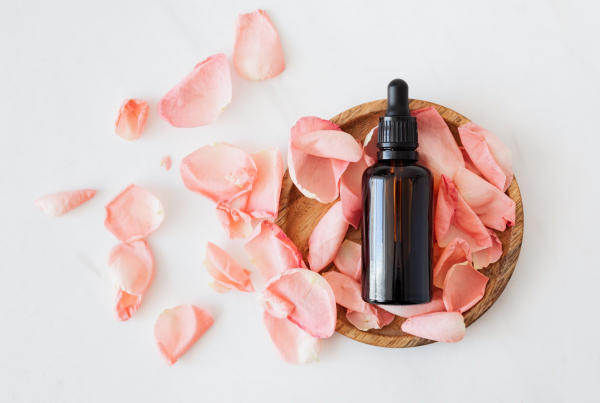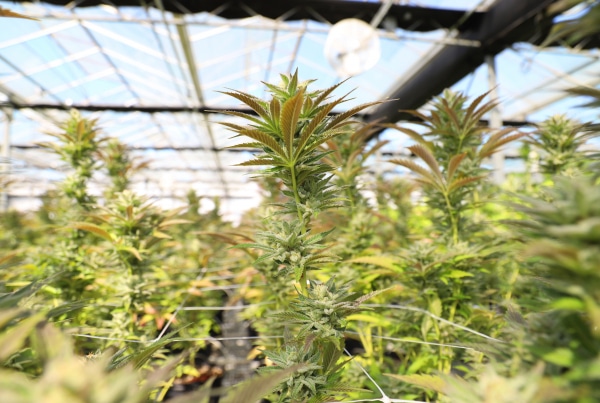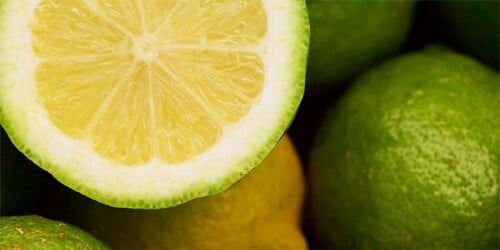
Cannabis’ quality, flavor, aroma, and effects varies greatly from strain to strain—and terpenes and trichomes have a lot to do with it. In fact, terpenes are just as important in determining the strain’s potential medicinal effects as cannabinoids, like THC and CBD.
When you consume THC or CBD concentrates that were produced from whole-plant extractions, you’ll typically see hundreds of additional trace compounds in the final product, that’s where the terpenes are. When you synthetically create a CBD product, those compounds do not exist.
The benefit of whole plant extraction is that those additional terpenes are there to exponentially increase the effectiveness of the CBD molecules—these are known as ‘full-spectrum’ extracts.
The medicinal impact of all those extra terpenes and trace cannabinoids (often called the “entourage effect”) ensures a product that delivers results. Understanding terpenes and what they do is the first step to selecting a cannabis strain that offers the benefits you need, whether it be anxiety relief or pain reduction or something even more specific.
If this sounds confusing, no worries! We’re going to cover the basics and then break that down into a tit-for-tat comparison to fine wine to help you understand. Plus, we covered all the most common terpenes found in cannabis, below.
Key Takeaways
- Cannabis is covered in trichomes (tiny appendages) that create terpenes (aromatic plant compounds) that vary in availability and concentration from strain to strain
- There are many different terpenes naturally occurring in different plant species, and hundreds that have been found in cannabis
- Understanding terpenes and their impact can help you determine which strains will provide the benefits you seek and can help you choose strains that meet your preferences for flavor, aroma, and effects
What Is A Terpene?
Terpenes are the aromatic compounds found in plant resins, including those from cannabis and organic hemp flower. There are thousands of terpenes found in the plant kingdom. That’s right, these are not unique to cannabis. All plants, herbs and fruits have unique terpene profiles which is what creates the differences in taste and smell.
Over 200 different terpenes have been discovered and considered safe to consume by the FDA. More than 100 different terpenes have been found in cannabis alone. Terpenes provide the aroma and flavor of cannabis varieties and may support the action of THC, CBD, and other cannabinoids in the body. In fact, they are produced in the same glands (called trichomes) as these other major compounds.
Terpene (noun):
- Pronounced: /ˈtərpēn/
- The aromatic compound found in cannabis that enhances the effects of THC and CBD.
- Any of a large group of volatile unsaturated hydrocarbons found in the essential oils of plants.
Usage Examples
“You can really smell the limonene terpene in this strain.”
“I just smell the bud and let the terpenes influence which I pick.”
What Is A Trichome?
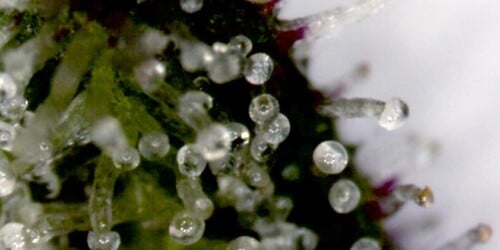
Originating from the Greek word “Tríchōma,” meaning “growth of hair,” the definition of trichome is “fine outgrowths or appendages on plants, algae, lichens, and certain protists.”
These trichomes look like tiny translucent mushrooms, and they are found throughout the botanical world on various plants for various reasons. For example, they are often used as a trap to catch prey because of their stickiness.
The cannabis plant actually uses them as a defense mechanism in the wild. In order to deter insects and animals from eating the buds, female cannabis plants’ trichomes produce terpenes, which often have bitter tastes or strong aromas that leave them unpalatable to pests. Furthermore, they act as a shield against dust and dirt in strong winds, and work as an antifungal to ward off disease.
Why Are Trichomes Important To Cannabis?
The leaves and the buds typically get all the fanfare when it comes to cannabis, but in reality, it’s the trichome that’s the star of the show. The tiny crystal-like stalks that cover the buds and make them sticky hold all the power to produce terpenes.
That is to say, all the recreational and medicinal value that’s derived from the cannabis plant is completely dependent on the production and preservation of high-quality trichomes.
These resin glands hold the THC and CBD compounds, all the delicious terpenes, and all the trace cannabinoids that make up a potent strain. This isn’t to say it’s the only place THC is found. Every part of the plant has some THC in it. Leaves have roughly four percent and you’ll often see trichomes grow not only on the buds but on surrounding leaves of some strains.
It’s important to realize that because trichomes are home to all these compounds, they are exactly what’s needed to create high-quality, high-potency extracts and concentrates. To put it in perspective, when you open the bottom of your grinder, the golden powder being collected is called kief. Also known as “dry sift,” it’s basically a collection of all the trichomes your grinder chopped off as you prepared your cannabis.
When people make ice water hash, they are using water to chop those trichomes off the plant and collect them through sifting screens. Isolate is a process in which the extractor tries to capture a compound like CBD in its purest form. Products like CBD isolate are so important because they provide the most powerful dose of medicinal value available.
One of the reasons people have begun using more concentrates is it’s a far more effective way to preserve trichomes. Cured cannabis flower will inevitably experience some trichome degradation over time, while high-quality extracts will preserve all the waxes and lipids that surround the cannabinoid and terpene molecules.
Comparing Cannabis To Wine: Terpenes And Tannins
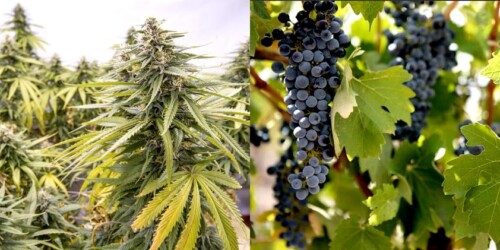
In order to help put cannabis into a more relatable context, we’re going to use the analogy of producing wine, which is a more familiar process for many. Cannabis is very similar to vino—each variety has a unique name and an accompanying history.
When selecting a bottle of wine, the label indicates the vineyard from which it was produced, the type of grape, the year it was produced, the alcohol percentage, and of course, the price.
As cannabis has modernized, its labels now indicate the grower, type of strain, harvest date, THC percentage, CBD ratio, and price as well. These are all characteristics a consumer takes into consideration when deciding which bottle of wine or strain of cannabis to purchase. Lets walk through the process from start to finish.
Vineyard = Garden
There are thousands of vineyards in different climates around the world—each with their own (sometimes secret) unique set of cultivation and fermentation practices. In the cannabis world, gardens can be outdoor or indoor, soil or hydroponic, and are often referred to simply as ‘grows.’
Ever master grower operates just like a vintner; they each employ a different growing, drying, trimming, and curing method based on all the dynamic factors that go into growing a living thing. The environment also plays a critical role: temperature, light, nutrients, growing medium, water, etc.
The next time you purchase cannabis, take the time to ask your caregiver or budtender if they know anything about the garden in which it was grown, the same way you’d inquire details from the sommelier. Some gardens are organic, while others may utilize harmful pesticides. It’s an important distinction when selecting cannabis.
Type of Grape = Strain of Cannabis
There are at least 6,000 cultivated varieties of grapes—some are native to certain regions and others are hybrid grapes. As the name indicates, native species of grapes will only thrive in their certain climates and soils; thus began the process of creating hybrid grapes.
In addition to increasing wine production in regions with poor climate or soil, hybrids were created to combat diseases, increase commercial production volume, and alter flavor profiles. Each grape varietal has a distinct flavor, aroma, and appearance.
Cannabis, like grapes, grows naturally on several different continents and countries—these indigenous strains are called landraces. Like the native species of wine, these strains will only grow in certain climates.
Breeders began hybridizing cannabis for many of the same reasons as wine makers; climate tolerance, disease resistance, yield, potency, flavor, appearance, growth structure, and effect. Some dispensaries have coveted house strains; the same way vineyards blend grapes to make more unique flavor profiles.
Year of Production = Harvest Date
Year of production is important as it indicates how fresh or aged your bottle of wine is. Some bottles are intended to be consumed in the year they’re released, while others should be aged, or cellared, for years to achieve the desired flavor of the vintner. Wine that will not be consumed immediately should be stored in an environment-controlled mini-fridge, closet, or cellar to prevent spoilage.
The harvest date of cannabis is important for the same reason; it indicates when the plant was chopped down. Following the harvest, the plant is prepared for consumption. This will include drying, trimming, and curing the flowers produced by the cannabis plant. Curing cannabis is similar to cellaring wine; over time, the molecular structure (cannabinoid profile) changes, which creates distinctions in appearance, effect, smell, and taste.
Just as the year 2001 California reds pale in comparison to the 2005’s, cannabis gardens will have better and worse harvests. Growing top quality grapes or cannabis requires a great caretaker and the optimal climate. Cannabis should also be properly stored for maximum preservation; preferably a sealed mason jar or similar airtight container away from direct sunlight.
ABV% = THC%

Alcohol is the component that induces wine’s intoxicating effects. When selecting a bottle of wine, the label will indicate Alcohol by Volume, or ABV (usually expressed as a percentage). This helps consumers be mindful of the wine’s potency when choosing to indulge.
Tetrahydrocannabinol (THC) is the primary chemical responsible for most of the psychoactive effects associated with cannabis. Legally purchased cannabis will include a label with a THC percentage by weight, also expressed as a percentage. This helps cannabis users identify how potent a specific strain is. THC percentages of dried cannabis buds can range anywhere from >1-25+ percent.
Liquor Store = Dispensary
The same factors that impact wine pricing also impact cannabis pricing (legal status excluded); supply, demand, branding, reputation, scarcity, production volume, quality, etc. This factor is largely preference-based, but as a general rule of thumb, you get what you pay for—think ‘Two Buck Chuck’.
A lot of us have that friend with great connections, you know, the one who’s on the wine-deal email list and always wants you to jump in on the next big order? He’s researching the vintner and the year. If you really want to learn how to buy the right cannabis, look past the dispensary(it’s not the name of the liquor store that matters, but what they have in stock).
A capable budtender will know whether they wholesaled the strain from another grower or cultivated it in their own garden. As you try different strains from different dispensaries, keep track of what you smoked and who grew it to find strains that will work for you (like buying different wines from different liquor stores). Just like there are dozens of California Cabernets from different vineyards, the Sour Diesel grown in one garden will vary slightly from another.
Using Terpenes To Choose A Strain
Determining your favorite wines takes time and cannabis is no exception. Do not expect your cannabis preferences to manifest themselves overnight. You will likely have to try several strains and dispensaries before finding your favorite—it’s part of the fun!
Although the strain names are oftentimes a little whacky (Super Silver Haze, Master Kush, etc.), they serve the same purpose as identifying the type of wine (Bordeaux, Cabernet Sauvignon, etc.). There are a number of online resources for learning more about the background, effect, and aroma of specific strains, but a broad way to approach the matter is by understanding terpenes.
While the main attraction for many people when it comes to terpenes is the sensory attributes, it’s important to realize that terpenes also play an important role in modulating the medicinal attributes of cannabis. Terpenes are important because when they are inhaled or ingested alongside cannabinoids, they interact with the endocannabinoid system to facilitate the onset of your high.
One terpene called Myrcene is produced in high concentrations in mangos, which is why some people may tell you eating them will boost your high. The science behind this very real pro-tip is that Myrcene increases cell permeability, which makes for faster absorption of THC, CBD, and the rest of the cannabinoids.
Another example of this phenomenon is limonene. Commonly found in lemons as well, limonene increases serotonin production in your body, which is why those fruity strains often elevate your mood like a fresh glass of lemonade. By learning about terpenes found in cannabis and what they do, you’ll be able to narrow down your choices to find the perfect strain. Here are 11 of the most common terpenes found in cannabis:
1. Limonene
- Flavor / Aroma: Citrus
- Found In: Lemon, Orange, Peppermint
- Medicinal Uses: Mood regulation, Cancer, Bronchitis
2. Myrcene
- Flavor / Aroma: Earthy, Musky, Fruity
- Found In: Mango, Lemongrass, Thyme, Eucalyptus
- Medicinal Uses: Insomnia, Inflammation
3. Linalool
- Flavor / Aroma: Floral, Spicy
- Found In: Lavender, Mint, Cinnamon
- Medicinal Uses: Insomnia, Inflammation, Cancer
4. Alpha Bisabolol
- Flavor / Aroma: Floral
- Found In: Chamomile
- Medicinal Uses: Inflammation, Anti-bacterial
5. Delta 3 Carene
- Flavor / Aroma: Piney, Earthy
- Found In: Juniper
- Medicinal Uses: Inflammation
6. Borneol
- Flavor / Aroma: Earthy
- Found In: Mint, Cinnamon, Wormwood
- Medicinal Uses: Insomnia
7. Alpha-Pinene / Beta-Pinene
- Flavor / Aroma: Pine
- Found In: Dill, Basil, Parsley, Rosemary
- Medicinal Uses: Inflammation
8. Eucalyptol
- Flavor / Aroma: Spicy
- Found In: Bay leaves, Tea Tree, Sage
- Medicinal Uses: Congestion
9. Terpineol
- Flavor / Aroma: Pine
- Found In: Cloves, Lilacs, Caraway, Gingergrass
- Medicinal Uses: Antioxidants
10. Caryophyllene
- Flavor / Aroma: Hoppy
- Found In: Beer, Thai Basil, Black Pepper
- Medicinal Uses: Chronic Pain, Anxiety, Depression
11. Nerolidol
- Flavor / Aroma: Woody
- Found In: Ginger, Citronella
- Medicinal Uses: Insomnia, Anti-fungal
The next time you purchase cannabis, take a closer look at those trichomes and really appreciate the terpenes contained inside! It’s important to note that terpenes are important for both high-THC and high-CBD products, and can be the defining factor in a personalized cannabis selection and wellness routine.









